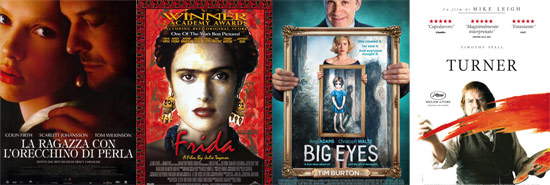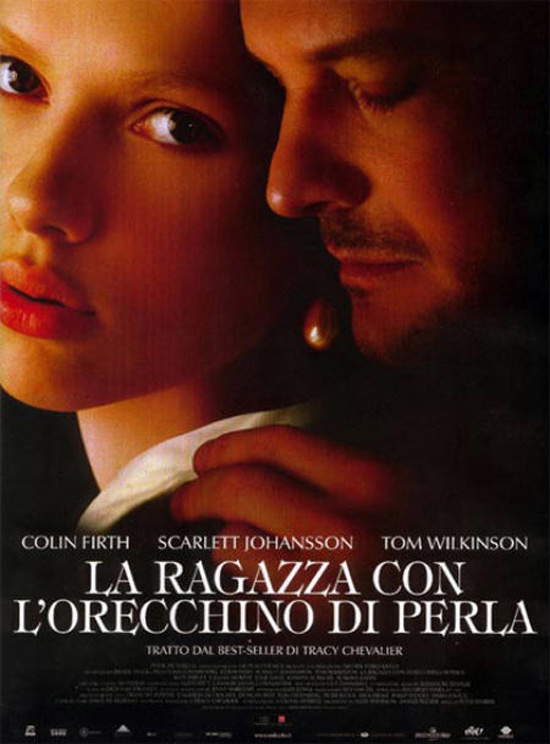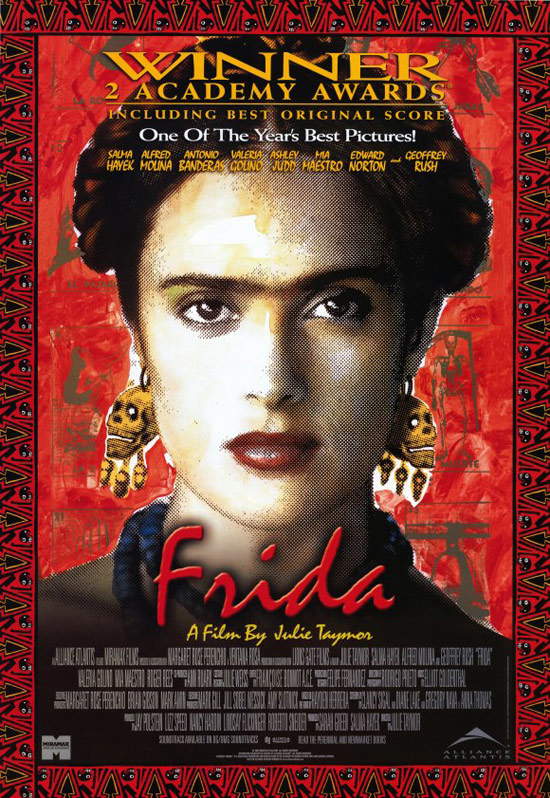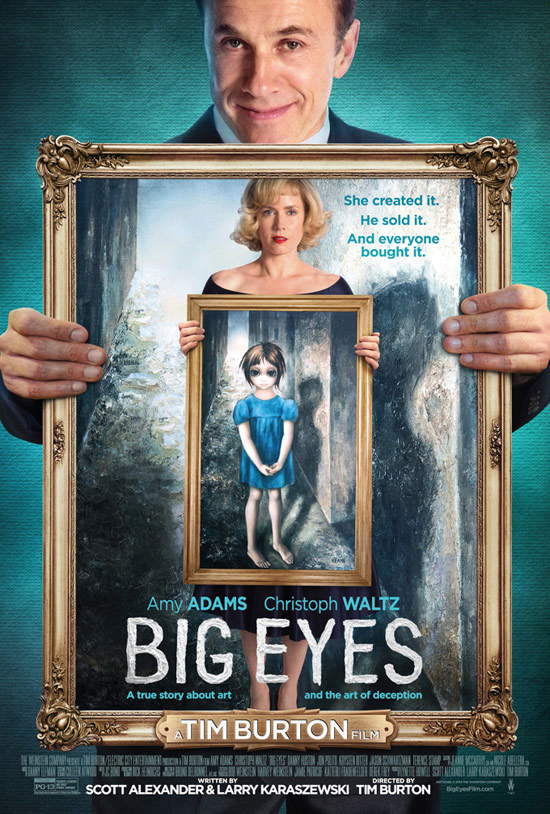Four films about art and artists
We have seen paintings in museums and learned about artists through art history books, but is it also possible to learn about artists’ stories from different points of view? Cinema has always offered us biographical stories to give us an idea of how certain events of the past happened, giving us the illusion of experiencing them firsthand and, therefore, to better understand certain aspects of history. Today, we offer four of the best films dedicated to some of the greatest known artists and the most admired paintings.

The Girl with the Pearl Earring (2003)
When a historical figure is shrouded in mystery, it is easy to tell a story that seeks to find an explanation for what brought him or her to fame.This is the case with Johannes Vermeer and his most famous painting, “Girl with a Turban,” better known as “Girl with a Pearl Earring.” A novel was written about this painter and this work, named after the painting and from which a film was made: both are intended to give us a version, albeit fictionalized (and who knows if plausible... !) of the story of the birth of the famous painting. The protagonist of the story is Griet, a Dutch girl who, because of the economic difficulties that burden her family, will work as a maid for Vermeer, who sees in her the model for the oil painting that today has made him famous even outside the circle of enthusiasts. The film shows us, then, the mutual admiration between the artist and his inspirational muse: he would like to immortalize Griet’s graceful beauty, while she is intrigued by Vermeer’s work and techniques, for a relationship that becomes increasingly intimate, which will end in the wrath of the painter’s wife once she discovers the connection between painter and model and the fact that the pearl earring given to Griet for the painting was his. Inevitably, Griet will be fired, but she will receive the famous earring as an inheritance from the artist when he dies. In the film, giving face and body to Griet is a Scarlett Johansson strikingly resembling the girl in the painting, whose fragile sensuality she manages to capture, while Johannes Vermeer is magnificently played by Colin Firth (but for an Oscar it had to wait for “The King’s Speech”). The film was nominated for an Oscar for best cinematography, best set design and best costumes.

Frida (2002)
One of the most fascinating figures in art history is undoubtedly the revolutionary but tormented Frida Kahlo, a Mexican surrealist painter who lived in the first half of the 20th century and was the victim of a car accident, aboard a bus, suffered when she was only eighteen years old, which caused severe damage to her spine, locking her in a state of loneliness that only art and her nonconformist soul were able to appease. Such a character could not fail to be the subject of both literary and cinematic works recounting her life. In fact, based on the novel “Frida: A Biography of Frida Kahlo,” the film “Frida” was made, featuring the beautiful Salma Hayek in the role of the painter who, thanks also to a successful make-up that gives her the same characteristic eyebrows, proves to be the ideal interpreter for this role, managing to capture both the lightheartedness and the anguish that the real Frida manifested among paintings, pains both physical and spiritual and communist activism. Salma, in fact, received an Oscar nomination for this performance, but Alfred Molina should not be forgotten, who gives us one of his best performances as Diego Rivera, Frida Kahlo’s painter and mentor and her future third husband.

Big Eyes (2014)
In 1994, Tim Burton directed his first biographical film, “Ed Wood,” chronicling the life and works of the man who is considered the worst director in film history. Twenty years later, in 2014, he directed another one, using the same screenwriters as “Ed Wood,” but this time the focus falls on the painter Margaret Keane, and the film is titled “Big Eyes.” As we know, Tim Burton makes films with gothic and surreal creatures at the center, protagonists of dark and fairy-tale stories, so it is not surprising that he wanted to make a film about the American painter known for her paintings depicting women, children or animals with huge eyes disproportionate to their bodies: evidently such a style is not so different from Burton’s. In fact, he himself (considering his past as a cartoonist and animator for Disney in the 1980s) draws the creatures that populate his enchanted worlds. The film gives us a glimpse into the scandal associated with these paintings: because Margaret signed them with her acquired name Keane, her husband Walter Stanley Keane, who has always been fascinated by his spouse’s work anyway, takes credit for them as soon as the paintings begin to gain public attention. Margaret, despite being bitter, at first lets him do it because the financial response is substantial and unstoppable, but soon she rebels and proves that she is the author of the paintings when the Hawaii court subjects the couple to a painting test from which Walter emerges defeated and Margaret victorious. The strength of this film lies in its lead actors Amy Adams and Christoph Waltz, two excellent performers who give excellent performances every time, so much so that the former won the Golden Globe for best actress in a comedy or musical film for this very role.

Turner (2014)
If you are a Harry Potter fan and have seen all the films based on Rowling’s books, you will most likely be familiar with British actor Timothy Spall. While not as well known as his fellow compatriots such as Anthony Hopkins, Ian McKellen or Micheal Cane, just to name a few, Spall has nonetheless proven to be an excellent performer in the various roles he has played, including that of the artist Joseph Mallord William Turner in the film entitled, precisely, “Turner” (original title: “Mr. Turner”). The film traces the last 25 years of the landscape painter: from the almost nonexistent relationship with the daughters he had from his love affairs, to the death of his father, from traveling to find new inspiration for his paintings, to frequenting the aristocracy , but also brothels, and even to being tied to the mast of a ship to paint a blizzard, the same blizzard that would later become the subject of his most famous painting. Timothy Spall, it was said, succeeds magnificently in externalizing the unpleasantness, cynicism, and neurosis of this maddening painter, managing to win the best male performance award at the Cannes Film Festival for this very role, confirming the bravura of this never-quite-appreciated actor.

Warning: the translation into English of the original Italian article was created using automatic tools. We undertake to review all articles, but we do not guarantee the total absence of inaccuracies in the translation due to the program. You can find the original by clicking on the ITA button. If you find any mistake,please contact us.





























